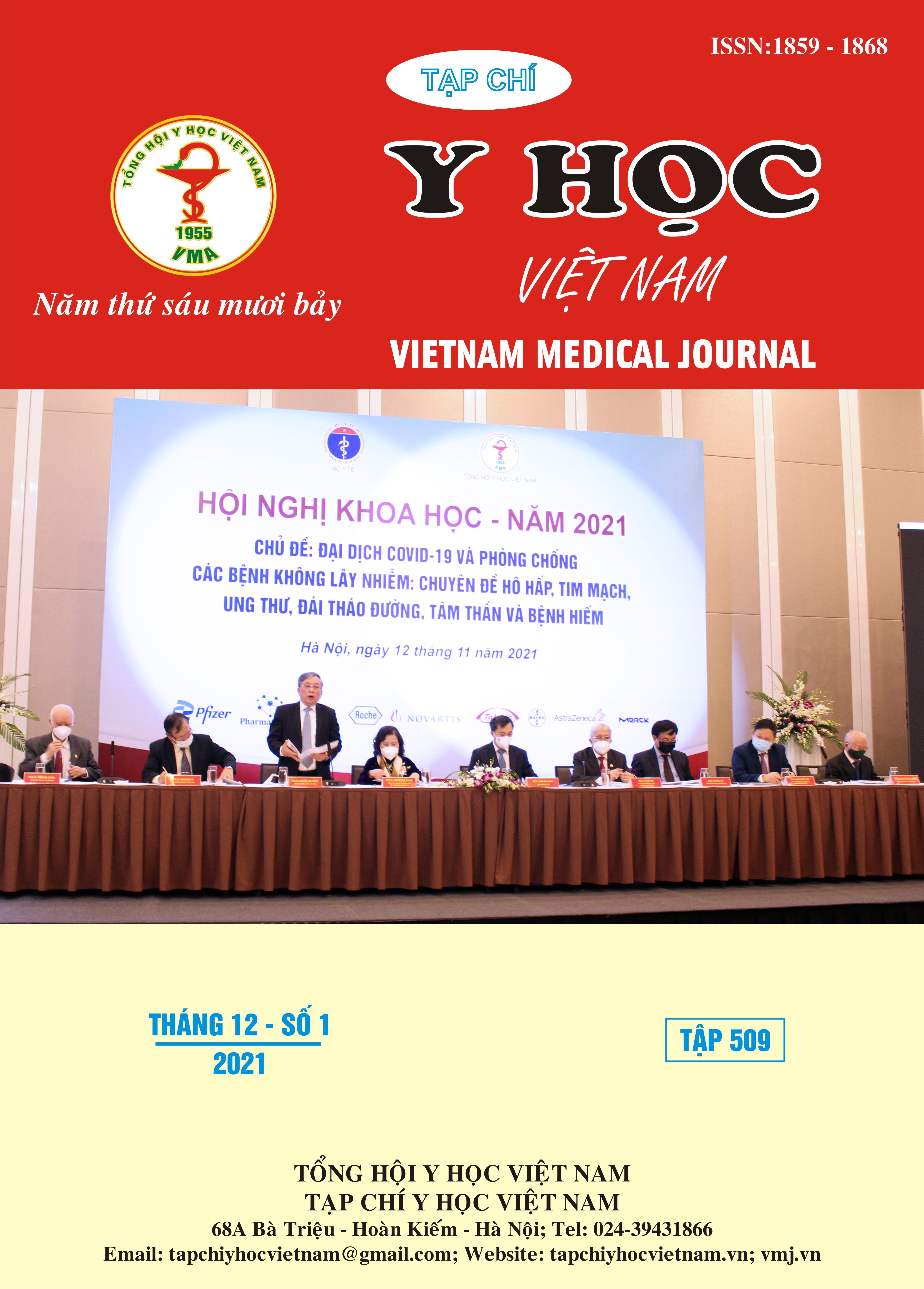NHỮNG YẾU TỐ ẢNH HƯỞNG ĐẾN KÍCH THƯỚC NHĨ TRÁI TRÊN SIÊU ÂM TIM 3D Ở BỆNH NHÂN RUNG NHĨ KHÔNG DO BỆNH VAN TIM
Nội dung chính của bài viết
Tóm tắt
Giãn nhĩ trái là một yếu tố nguy cơ của đột quỵ và là yếu tố quyết định cho sự thành công của chiến lược kiểm soát nhịp tim ở bệnh nhân rung nhĩ. Tuy nhiên, những yếu tố liên quan đến thể tích nhĩ trái ở bệnh nhân rung nhĩ vẫn chưa được hiểu đầy đủ. Mục tiêu: Tìm hiểu những yếu tố liên quan đến giãn nhĩ trái trên siêu âm tim 3D ở bệnh nhân rung nhĩ không do bệnh van tim. Đối tượng và phương pháp: Nghiên cứu mô tả cắt ngang tiến hành trên các bệnh nhân rung nhĩ không do bệnh van tim. Tất cả các bệnh nhân được hỏi bệnh, thăm khám lâm sàng kỹ lưỡng và làm bệnh án theo mẫu, làm một số thăm dò và xét nghiệm sinh hoá, làm ĐTĐ 12 chuyển đạo, làm siêu âm tim 2D và 3D theo hướng dẫn của Hội Siêu âm Tim Hoa Kỳ. Thể tích nhĩ trái được đánh giá trên siêu âm tim 3D bằng phần mềm Heart Model. Kết quả: Từ 07/2020 đến 07/2021 có 80 bệnh nhân được đưa vào nghiên cứu, tuổi trung bình60,7 ± 4,8, nam 48.8%, nữ 51.2%. Thể tích nhĩ trái trên siêu âm tim 3D có mối liên quan với các yếu tố như tiền sử tăng huyết áp (β= 1,3 ± 0,9ml/m2), đái tháo đường (β=0,8 ± 0,2ml/m2), bệnh thận mạn (β=2,4 ± 0,9 ml/m2), bệnh mạch vành (β=2,2 ± 0,5) và rối loạn chức năng tâm trương (β=2,3 ± 4,6 ml/m2). Khi phân tích đa biến, bệnh mạch vành (β=2,5 ± 0,4 ml/m2), bệnh thận mạn (β=2,9 ± 0,3 ml/m2) và rối loạn chức năng tâm trương thất trái (β=2,4 ± 0,4ml/m2) cho thấy mối liên quan độc lập với thể tích nhĩ trái ở bệnh nhân rung nhĩ không do bệnh van tim. Kết luận: Rối loạn chức năng tâm trương thất trái, bệnh thận mạn, bệnh mạch vành là những yếu tố có ảnh hưởng đến giãn thể tích nhĩ trái trên siêu âm tim 3D ở các bệnh nhân rung nhĩ không do bệnh van tim.
Chi tiết bài viết
Từ khóa
Rung nhĩ, siêu âm tim 3D, thể tích nhĩ trái
Tài liệu tham khảo
2. Krijthe, B. P. et al (2013). Projections on the number of individuals with atrial fibrillation in the European Union, from 2000 to 2060. European Heart Journal34, 2746–2751.
3. Bouzas-Mosquera, A. et al (2011). Left atrial size and risk for all-cause mortality and ischemic stroke. CMAJ183, E657–E664 .
4. Rodevan, O. et al (1999). Left atrial volumes assessed by three- and two-dimensional echocardiography compared to MRI estimates. Int J Card Imaging15, 397–410.
5. Hindricks, G. et al. 2020 ESC Guidelines for the diagnosis and management of atrial fibrillation developed in collaboration with the European Association for Cardio-Thoracic Surgery (EACTS). European Heart Journal42, 373–498.
6. Đỗ Ngọc Bích & Nguyễn Thị Thu Hoài (2020). Khảo sát kích thước và chức năng nhĩ trái ở bệnh nhân rung nhĩ cơn trên siêu âm tim 2D và 3D. Tạp chí Tim Mạch học Việt Nam23, 87-94 .
7. Lang, R. M. et al (2015). Recommendations for Cardiac Chamber Quantification by Echocardiography in Adults: An Update from the American Society of Echocardiography and the European Association of Cardiovascular Imaging. Eur Heart J Cardiovasc Imaging16, 233–271.
8. Pawar, S. The study of the relationship between left atrial (LA) volume and LV diastolic dysfunction and LV hypertrophy: Correlation of LA volume with cardiovascular risk factors (2020). Journal of Women’s Health and Reproductive 1
9. Zemrak, F. et al (2017). Left Atrial Structure in Relationship to Age, Sex, Ethnicity, and Cardiovascular Risk Factors. Circulation: Cardiovascular Imaging.


